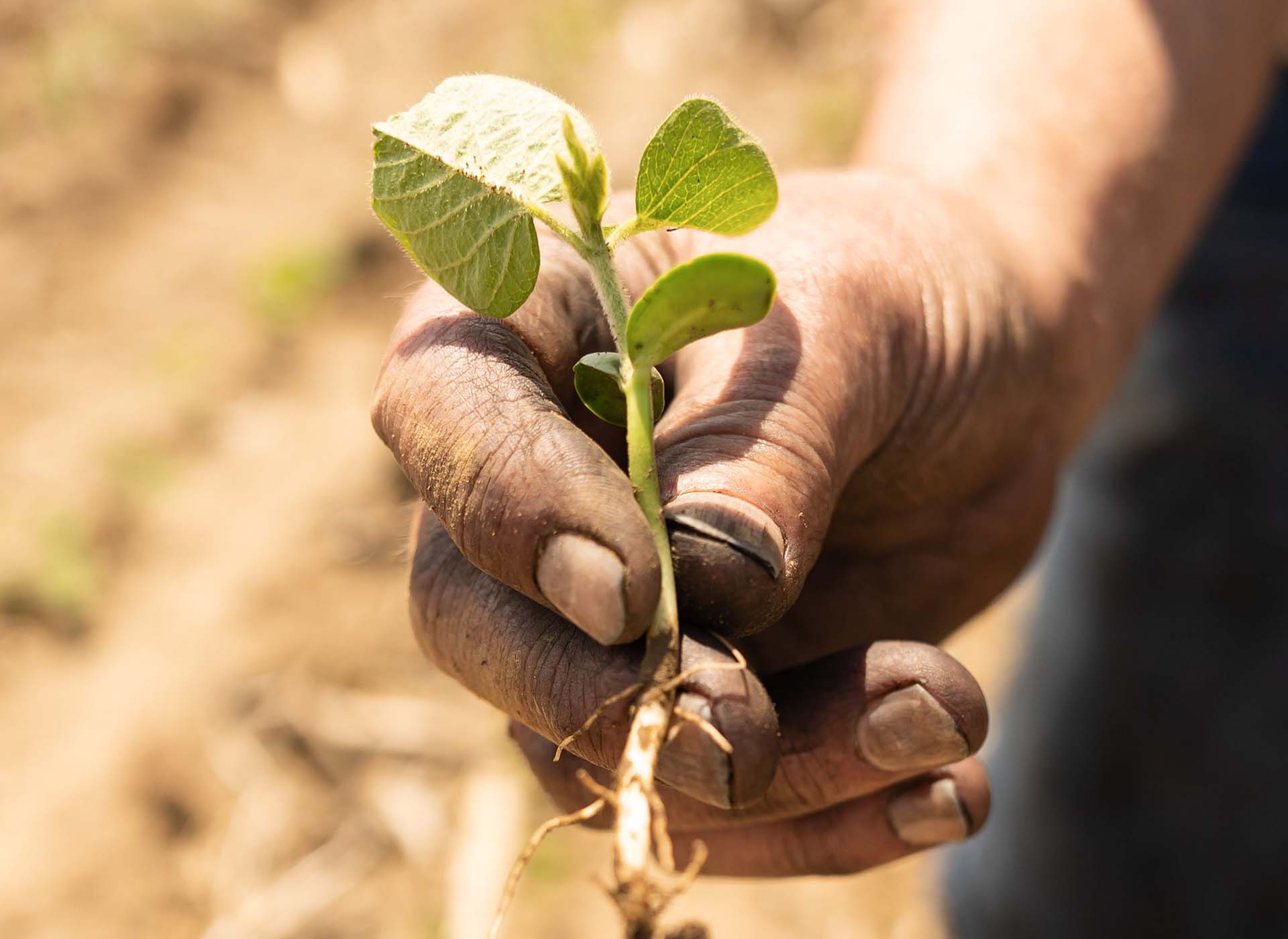
(Photo: Iowa Soybean Association / Joclyn Bushman)
Walking Rows: Local updates from agronomists
May 23, 2024 | Kriss Nelson
Editor’s note: This report is the first in a bi-monthly series featuring updates from the field from Iowa Soybean Association research agronomists.
Despite excessive rainfall delaying spring field work, Iowa Soybean Association research agronomists report that farmers in their regions are progressing with planting. Now is the time to check plant stands and scout for early-season insect pressure.
Shane Beck - Northeast/Northern Iowa
Farmers in northeast Iowa have made a lot of progress with planting over the last week. Some of them finished up this weekend, while others are close to being done. One issue I've noticed in some of the mid- to late-April planted crops is ponding and crusting due to heavy rain. There are also some areas where a large amount of soil has moved, causing crops that were planted about 2 inches deep to now be 3-4 inches deep. Once it dries out, scouting these areas should be done to determine if replanting will be necessary.

I conducted stand counts for soybeans on a plot planted in mid-April. The stands were reduced by about 30,000, which isn't too alarming unless there was a low population planted to begin with. Ideally, the stands would be close to 100,000 plants per acre as the final count. Interestingly, the highest population in the plot (170,000) experienced the largest reduction in population, with about 35,000 reduced.
Alex Schaffer - Central Iowa
As planting ends in my area of central Iowa, we’re noticing that many seeds are taking a few weeks to emerge from the ground. This week, farmers should evaluate their crop stands and make decisions regarding replanting where necessary. The current recommendation is to aim for a final stand of 100,000 soybean plants per acre. This year we’ve seen more variable emergence because of the wet conditions. This leads me to believe that we might not achieve the same high yields as we did in 2023 when we were relying on subsoil moisture.

The rain prevented some farmers from applying pre-emergent herbicide after they planted their acres in time before the crops emerged. As a result, some farmers had to change their herbicide program to prevent crop injury.
Herbicide efficacy and wet conditions also caused issues for terminating cover crops in some areas. There was a debate about whether to spray and wait for the cover to die before planting or to plant green and then spray after. The primary concern was not wanting to plant into a cover crop that is actively dying because it can lead to planting difficulties. Some also struggled with termination efficacy. Cool nights early in the planting season led to some herbicide efficacy problems. The recommendation is to use a full label rate of glyphosate when nights turn warm, above 40 degrees.
Drew Clemmensen - Northwest/Western Iowa
Planting is nearing completion as most growers have completed or are getting ready to plant their last field in the western part of the state. Crop growth varies widely, with some fields having emerged corn in the VE-V2 stages and emerged soybeans in the VE-V2 stages, while other acres have just been planted in the last couple of days. Some are considering replanting due to the impact of excess rainfall on germination and stand counts, whereas some in my area have already replanted.

The lack of heat units has led to slow-growing conditions, making our crops more susceptible to early-season insect pressure. Monitoring for cutworm activity in emerging corn and checking for bean leaf beetle feeding in early-emerged soybeans is necessary.
As planting season ends and the focus shifts to herbicide applications, it's important to reassess your nitrogen program. The unusually wet spring has led to increased nitrogen leaching, so it's important to understand your current nitrogen levels. This is a good time to consider applying more nitrogen if necessary.
Lucas DeBruin - Southeast/Eastern Iowa
Storms this week caused damage in parts of my region in southeast Iowa with golf ball-sized hail falling in areas to the south. Minor damage was reported, but nothing disastrous that I have noticed.
Farmers have taken advantage of small windows of opportunities to plant. Putting in long hours combined with the size of equipment, a lot is getting planted during those windows.

Earlier planted crops are emerging and looking good so far, despite the excess moisture. I advise scouting your soybeans for bean leaf beetles. With the mild winter, there have been some reports of them feeding early. Adult beetles are oval-shaped and will typically be dark yellow with black markings.
Following guidelines from Iowa State University, economic thresholds for bean leaf beetle feeding is two to eight beetles per plant and depends on crop value and control costs.
Back